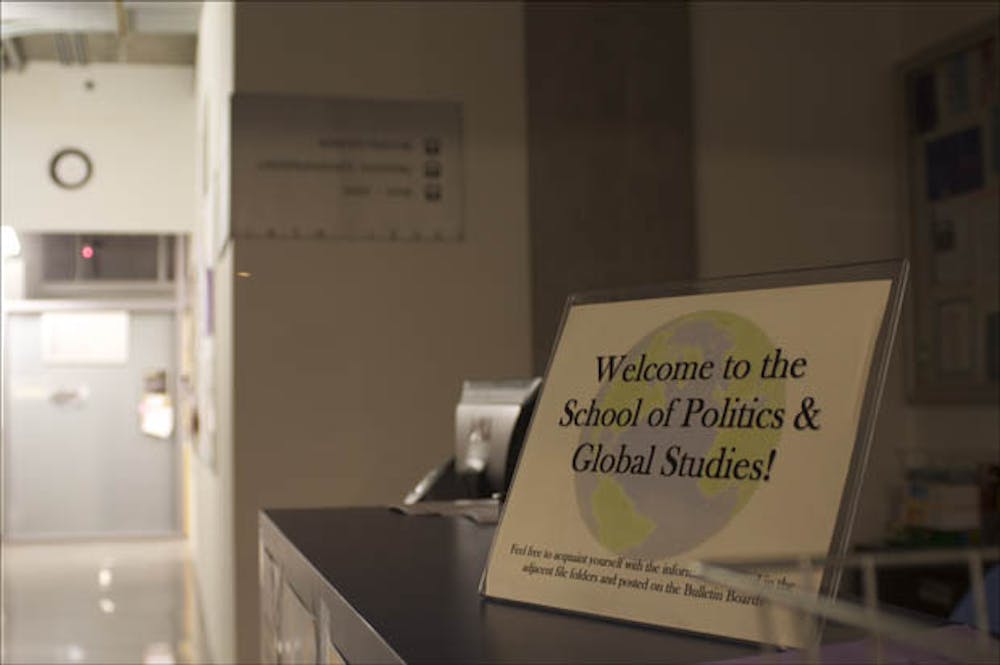ASU is unique in its approach to forming new schools, and focusing more on collaboration opportunities than budget-saving benefits, said several ASU professors and directors.
One of the newest collaborative schools is the School of Politics and Global Studies, which formed in July and celebrated its launch on Jan. 27.
Patrick Kenney, director of the new school, said one of the goals in the merge was to combine interdisciplinary areas like global studies with traditional academic areas like political science.
“I think there will be some interesting research that comes from it,” Kenney said. “I think it’ll expand opportunities for students.”
It was a challenge to put the two units together, he said, but the changes have been mostly smooth.
Most of the changes are related to increased opportunities for research and class options, but the curriculum is overall the same.
“If you look at the main thrust of global studies, they have a big component on global governance, or how global institutions affect the world,” Kenney said.
Interdisciplinary work will also attract more funding for research, he said.
Linda Lederman, dean of social sciences in the College of Liberal Arts and Sciences, said she views the collaboration of the new school as a marriage.
The reason for the forming of the new school was mainly for research collaboration, and money was a secondary purpose, she said.
Chris Gast, a political science and communications senior, said he was opposed to the change at first.
“At first, I thought it was a really bad idea,” Gast said. “I was really concerned about what was going to happen to my degree program.”
Now, Gast said he appreciates the increased resources for political science and said the combination is a step toward getting a school of government at ASU.
“I would like to see the school name the department after a political person,” he said, “and take steps toward really setting up how we’re going to be the premier school of government in the Western United States.”
The School of Politics and Global Studies is not the only school to form through collaboration. The College of Liberal Arts and Sciences has a long history of collaboration, starting in 2003, with the School of Life Sciences.
Robert Page, director of the school, said in an e-mail that the main change was uniting three departments: biology, plant biology and microbiology.
“It has made it much easier to build in areas that overlap disciplines,” Page said. “Faculty aren’t so focused on building within their own departments bounded by their own disciplines.”
Kip Hodges, director of the School of Earth and Space Exploration, said the school formed in July 2006, with existing faculty and programs moving from the Department of Geological Sciences, which is not a separate department anymore, and the Department of Physics and Astronomy, along with other related areas.
The Department of Physics exists now without the astronomy aspect, since that moved to the new school.
“The idea for this school was a conceptual idea first,” Hodges said. “Then the question was, ‘What kinds of faculty do we need to accomplish the research and the educational goals of that school?’”
It was challenging getting different faculty members to collaborate, Hodges said.
“When you bring people from different [academic] cultures together and you put them in the same neighborhood, it’s a difficult thing for them to … learn how to work together,” he said.
However, the department is trying and succeeding in many ways, he said, while some other schools seem to be more insular.
“[If] you come at a problem from a lot of different directions, the tendency is to make more progress on that problem than if you come at it from just one direction,” Hodges said.
ASU seems to be more focused on collaboration for the sake of new opportunities and not just the money aspect, he said.
“The idea was, we can tackle different classes of problems if we put these schools together,” Hodges said.
Reach the reporter at reweaver@asu.edu




